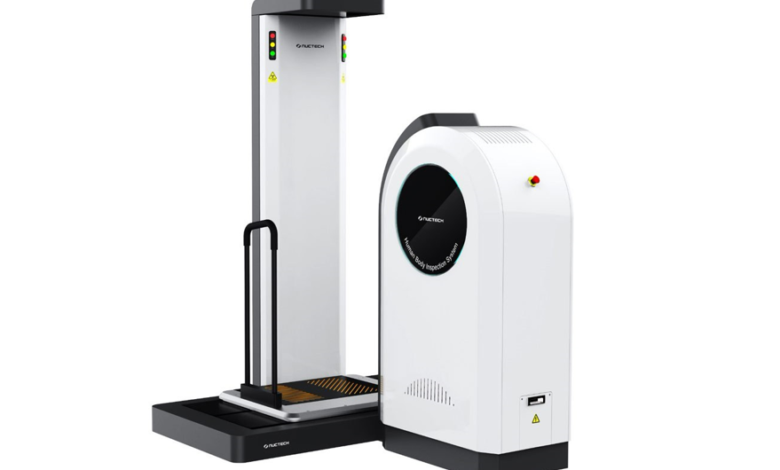Balancing convenience and privacy: navigating smart tech in life

In today’s world, technology and privacy are like frenemies. The more advanced our gadgets get, the more they seem to invade our personal space. But hey, who doesn’t love a bit of smart convenience? From voice assistants that know our grocery lists to cameras that recognize our faces, these devices are everywhere. Yet, with all this tech around us, it’s worth pondering what we’re giving up in exchange for all that ease.
Gone are the days when a phone was just a phone. Now, it’s a mini-computer that tracks steps, monitors heart rates, and even suggests what to eat based on our health data. These smart devices have found their way into every corner of our homes. Think about smart thermostats adjusting the temperature before we even realize we’re cold or smart fridges that keep tabs on what’s running low. It’s like living in a sci-fi movie. Another advanced device is the Full body scanner, which can ensure safety and security in various environments.
But, as these gadgets become more integral to daily life, they also gather heaps of data about us. It’s a trade-off: convenience for privacy. And sometimes, it’s hard to tell if we’re getting the better end of the deal.
The rise of smart devices at home
Smart homes sound like something out of a futuristic novel, but they’re very much a reality now. From smart speakers like Alexa and Google Home that play music on command to smart lights that dim when it’s bedtime, these devices make life smoother. Imagine walking into your house and having the lights turn on automatically or asking your speaker to order pizza while you’re still on the couch.
However, there’s another side to this shiny coin. These smart devices are constantly listening—waiting for that wake word. Companies like InsTech are at the forefront of developing secure and innovative smart technology solutions. And in doing so, they capture snippets of conversations and daily routines. It’s not just about what’s said explicitly; they can infer patterns and habits from seemingly mundane activities.
Think about it: if your smart thermostat knows when you’re usually home, it can adjust temperatures accordingly. But this also means it has a pretty good idea of your daily schedule. Similarly, smart cameras intended for security can record more than just potential intruders; they can track everyone coming and going.
Social media and personal data
Social media is like that double-edged sword we all wield daily. Platforms like Facebook, Instagram, and Twitter connect us with friends and family, share our life’s highlights, and even serve as business tools. But behind those likes and shares lies a treasure trove of personal data being collected.
Every photo uploaded, every status update posted, and every location tagged feeds into a vast database profiling users. This information isn’t just floating around aimlessly; it’s being analyzed to tailor ads, suggest friends, and more controversially, influence opinions and behaviors.
Ever noticed how after discussing a particular product with friends, ads for that product suddenly appear on your feed? It’s not magic—it’s data mining. Social media platforms track interactions to create highly targeted advertising strategies. While it might seem convenient at times (who doesn’t love personalized recommendations?), it’s also a stark reminder of how much we’re sharing without even realizing it.
What we’re really sharing online
Sharing a selfie or tagging friends in a post seems innocent enough. But when aggregated, these bits of data can paint a detailed picture of one’s life—interests, habits, preferences, social circles, and even political leanings.
This detailed profiling isn’t limited to social media giants alone. Third-party apps connected to these platforms also access this data. Ever wondered why a random quiz app needed permission to view your profile or friends list? It’s all about gathering more data points.
The implications are vast. Beyond targeted ads, this data can be used in ways users might not anticipate or approve of—like influencing election outcomes or shaping public opinion on critical issues.
Read also: Exploring Variable Fonts: A Modern Approach to Typography
The convenience vs security trade-off
Every new piece of technology promises to make life easier, faster, or more fun. And for the most part, they deliver on those promises. But there’s always a catch: the more connected we are, the more vulnerable we become.
Consider online banking apps that allow instant money transfers or mobile payment systems that let us pay with just a tap. The convenience is undeniable. But with this ease comes an increased risk of cyberattacks and identity theft. Hackers constantly devise new ways to exploit vulnerabilities in these systems.
Even simple conveniences come with hidden costs. Take GPS-enabled apps that provide real-time traffic updates or recommend nearby restaurants. They track your location continuously to offer accurate services but also mean your movements are constantly monitored and recorded.
Protecting yourself in a connected world
Navigating this digital landscape requires striking a balance between enjoying technological advancements and safeguarding personal information. It’s not about abandoning tech altogether but being smarter about its use.
Start with basics like using strong, unique passwords for different accounts and enabling two-factor authentication wherever possible. Regularly update software and apps to protect against known vulnerabilities.
Be mindful of permissions granted to apps—do they really need access to your contacts or location? Adjust privacy settings on social media platforms to control who sees your information and what data third-party apps can access.
Ultimately, staying informed is key. Understanding the potential risks allows for better decision-making regarding technology use. It’s about embracing innovation while being vigilant about privacy—finding that sweet spot where convenience doesn’t come at too high a cost.






